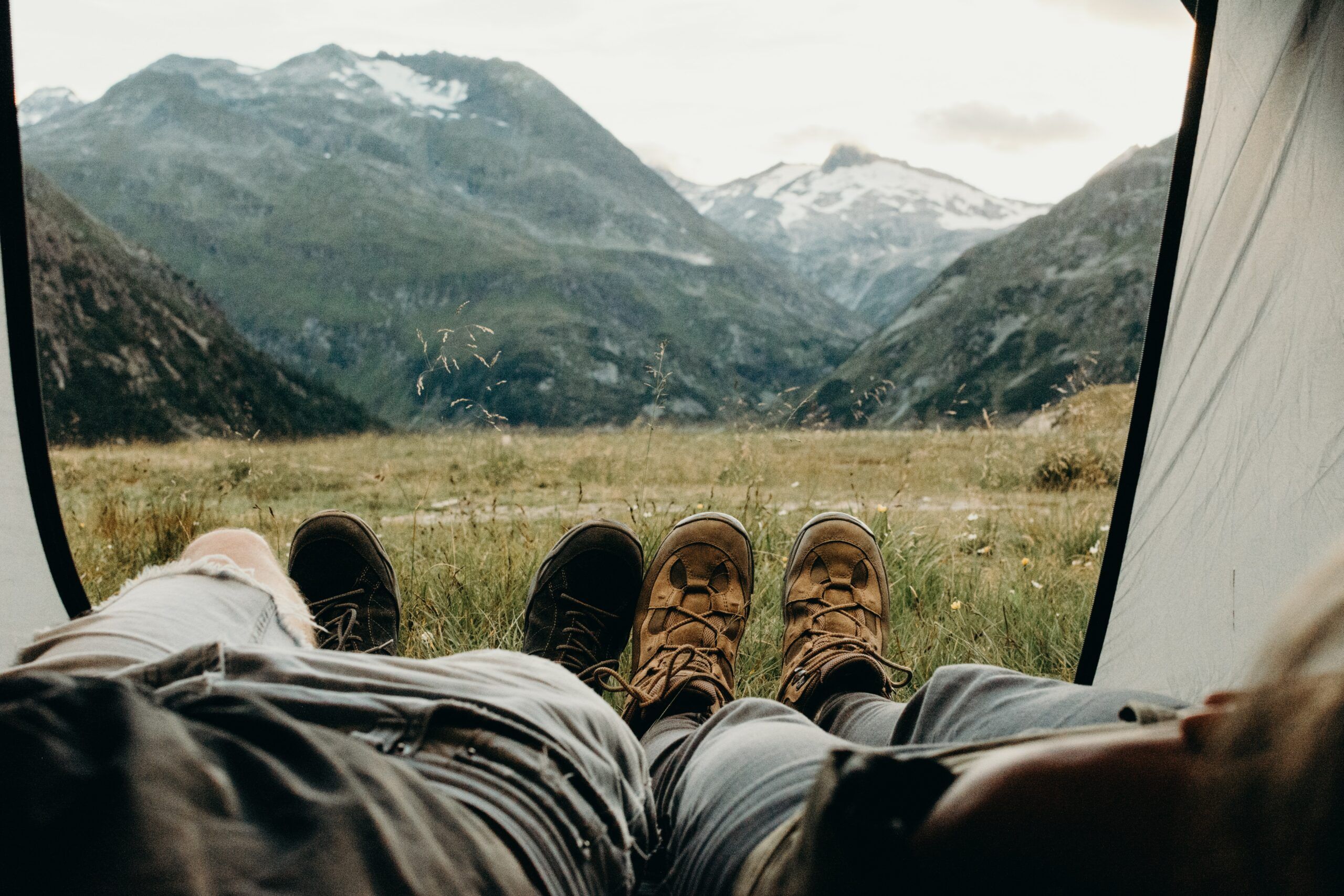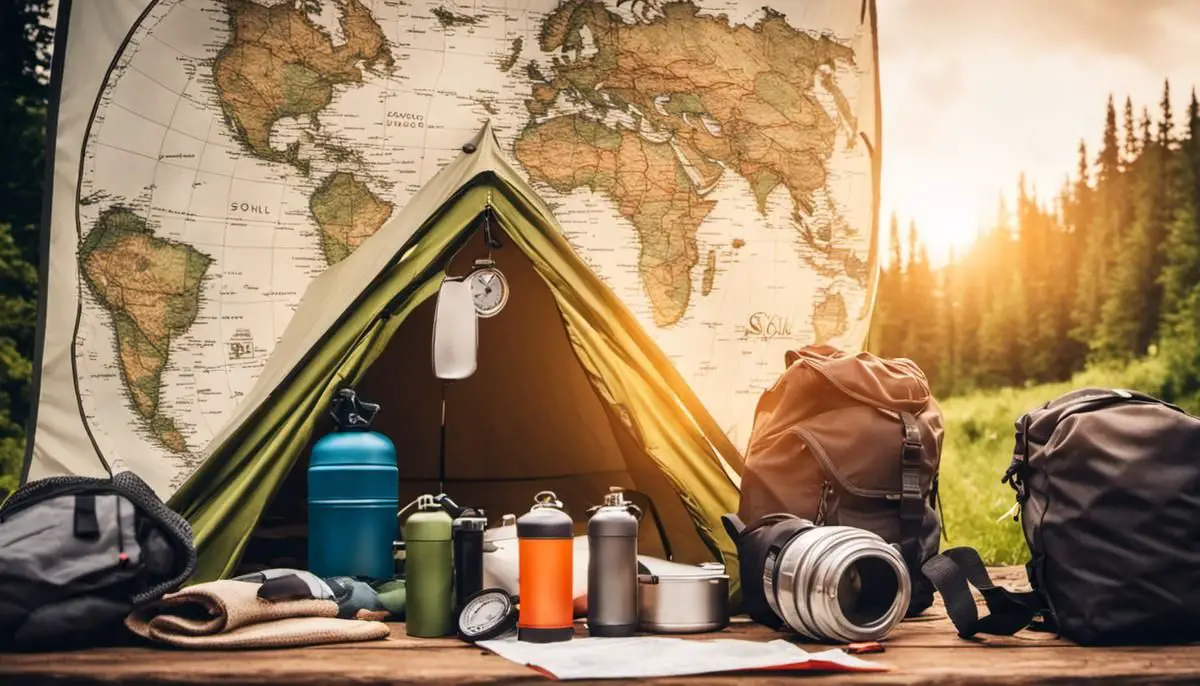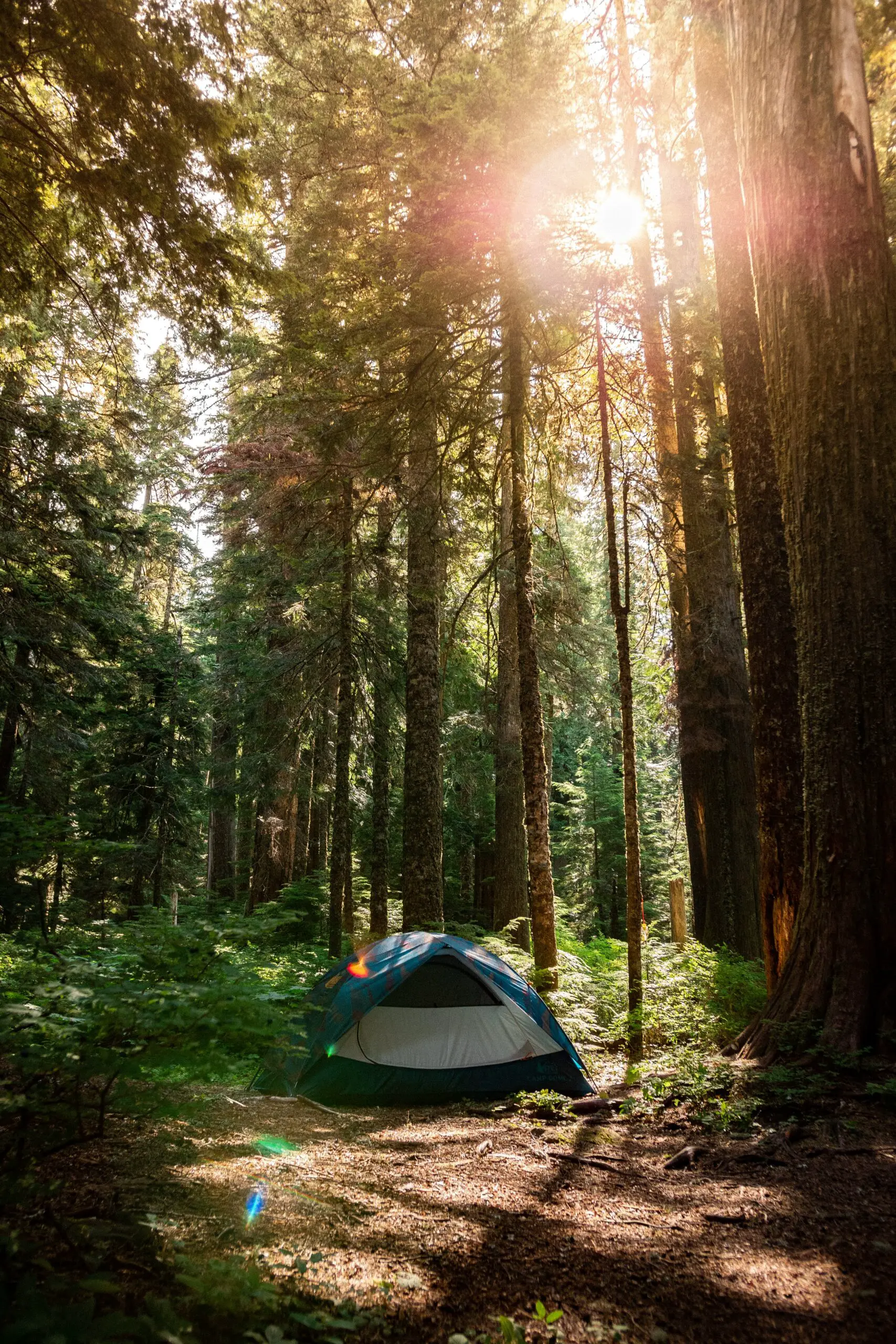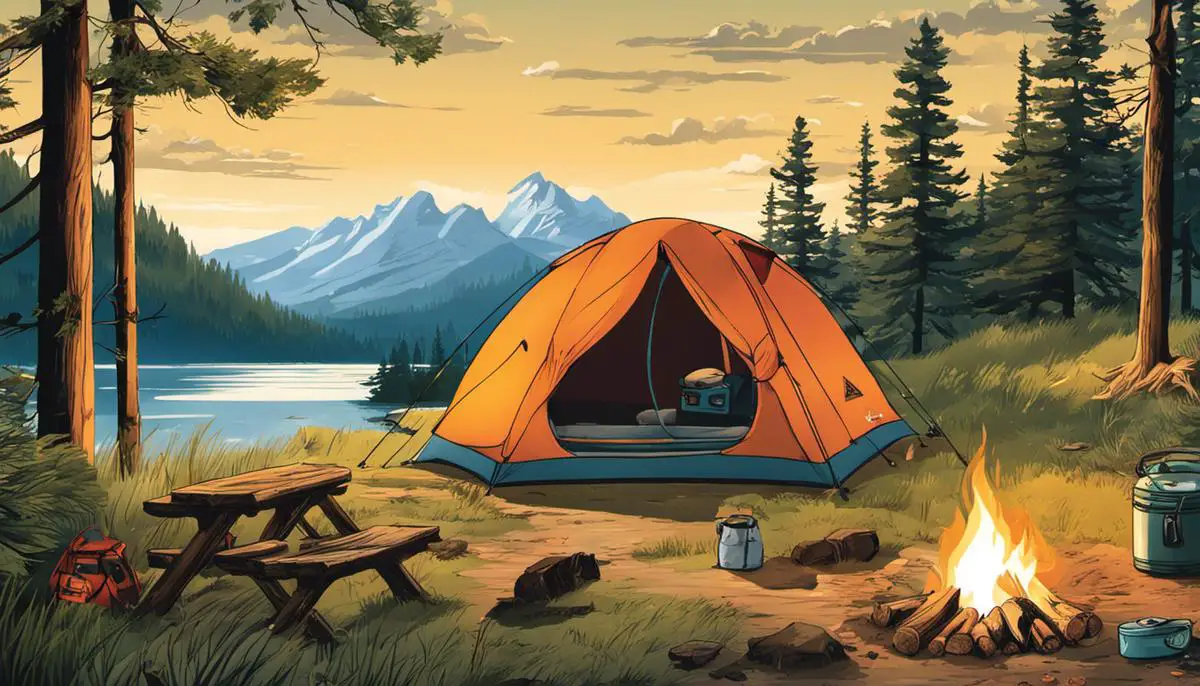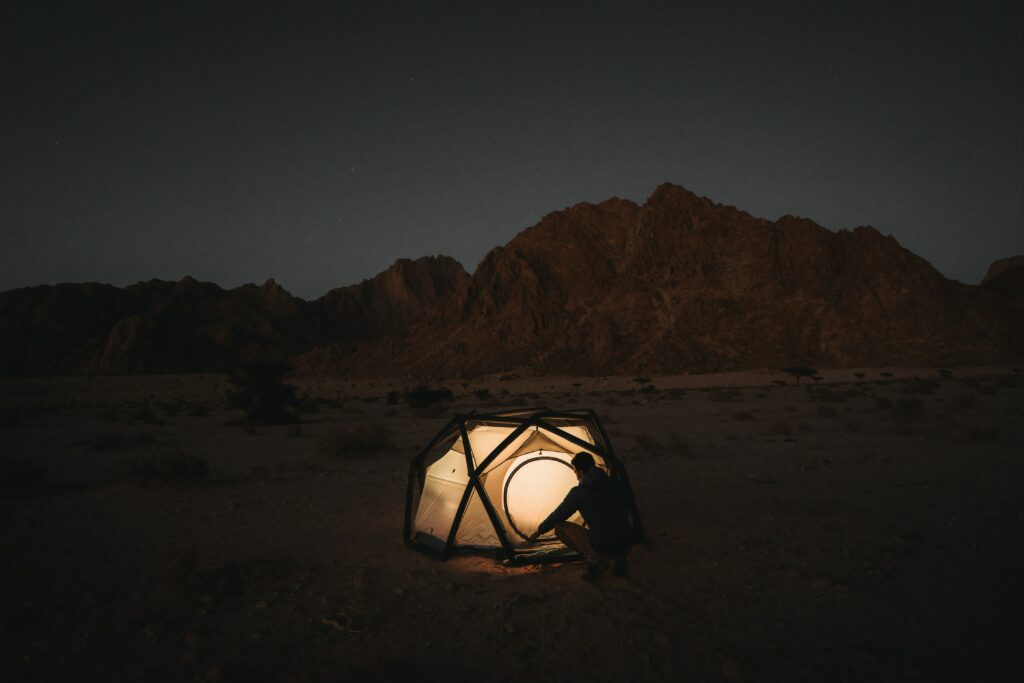Unforgettable Camping for Couples: A Guide
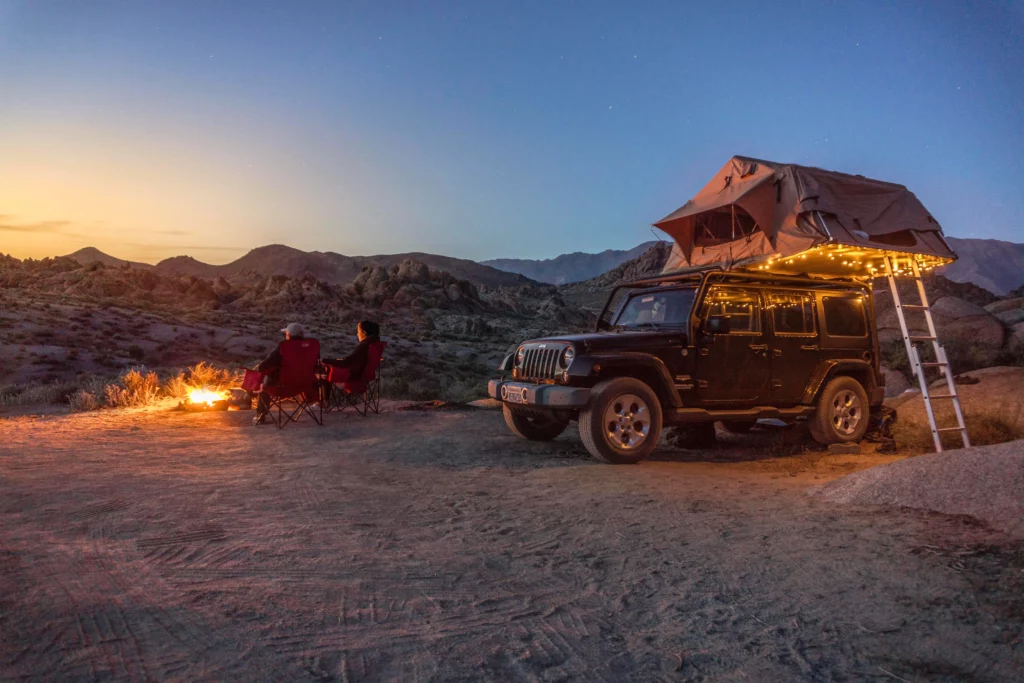
Escaping the hustle and bustle of everyday life and tuning in to the tranquility of nature can be a rejuvenating experience. This is especially true for couples seeking a memorable adventure steeped in togetherness and exploration. One activity that provides such a dynamic experience is camping.
Camping offers a perfect blend of adventure, relaxation, and bonding for couples. The charm of camping lies in its combination of planned preparations and spontaneous surprises. It’s not just about pitching a tent under the stars; it also involves preparing for various weather conditions, packing essentials, and selecting the perfect campsite. Moreover, camping is enriched by fun activities that can add a dose of romance and excitement to the overall experience, whether it’s stargazing, telling stories around a campfire, or cooking meals together.
Planning and Preparation
Selecting the Right Campsite
When planning for a couples camping trip, the first step is to select the right campsite. Depending on what you and your partner enjoy, the right campsite can range from a remote backcountry area to a campground offering a host of amenities. Look for sites that offer a balance between convenience and natural beauty. You’ll be spending a lot of time at your campsite, so pick somewhere that you find appealing and comfortable. Ensure the campsite is safe, has good drainage in case it rains, and has a source of clean water nearby.
We love camping directory sites The Dyrt and Campendium for finding new campsites that match what we are looking for. Both sites also have mobile apps that are worth installing if you camp often.
Packing Essentials for Camping
Camping for couples requires you to be minimalist, but you should at the same time ensure you bring along all essentials. At the minimum, pack a first aid kit, plenty of food and water, appropriate clothing for the expected weather, and navigation tools like maps and compasses. Don’t forget a tent, sleeping bags, cooking supplies, and for extra comfort, compact camping furniture. If you’re planning to hike, consider lightweight options where possible.
When packing for a couples camping trip, we highly recommend mixing in some romantic elements for your trip. We like to pay special attention to the sleeping arrangements when camping as a couple. Ditch the individual sleeping bags for a double sleeping bag or a queen inflatable mattress. We love our Coleman Queen Airbet Cot with bedding from home to make sleeping luxurious while camping. No matter what you choose to pack for your couple’s camping trip, enjoying the outdoors with your partner can be an amazing way to reconnect.
For a basic list of what to bring camping, check out our Beginner’s Guide to Camping.
First Aid Kit Essentials
A first aid kit is a must for any camping for couples trip. The kit should include bandages, antiseptic wipes, tweezers, medical tape, pain-relief medication, any prescription medications, and an emergency blanket. Check your kit before each camping trip to replenish any supplies that have been used up or expired.
Food and Water Considerations
For food, many camping couples prefer simple meals that are easy to cook. If you and your partner fall into this category, opt for non-perishable foods like canned goods, instant meals, trail mix, and energy bars.
If enjoying the process of making meals together is more your speed, it’s important to plan your camping meals ahead of time. Make sure to bring all of the cooking gear, ingredients, and spices you’ll need for your gourmet approach. You’ll find that even an otherwise-mediocre dinner can be fantastic when you’ve made it together with your partner around the campfire.
If you’ll have access to fresh water, carry a portable water filter to ensure it’s safe to drink. If not, you’ll need to bring enough water for your entire stay. Whether you’ll filter water or bring it along, make sure you’ll have enough water for both drinking and cleaning during your trip. Having enough drinking water ensures you’ll both avoid dehydration and having enough water for cleaning is just a good idea for a multitude of reasons.
Dressing for the Weather
Check the weather forecast before your camping trip, and pack clothing accordingly. Remember, it’s better to over-pack layers than under-pack. At a minimum, ensure you have a waterproof jacket or poncho, a warm sweater or fleece, and quick-drying pants or shorts. Don’t forget comfortable walking shoes!
Navigating the Terrain
Before setting off, acquire a detailed map of the area where you’ll be camping and familiarize yourself with the different paths, landmarks, and potential dangers. Carry a compass and potentially a GPS device, if you have one. Being well-prepared will help you confidently navigate the terrain and enjoy your camping experience.
Emergency Planning
Prioritize safety when camping. Let someone know where you’re going and when you’re expected to return. Take a short course on wilderness survival or at least familiarize yourself with the basics. And, don’t forget your fully stocked first aid kit, a sturdy tent, and enough food and water supplies to last in case you’re stranded longer than anticipated. Preparation is key when considering unexpected weather changes, getting lost, injuries or wildlife encounters.
If you venturing a bit further off the beaten path, consider bringing along a satellite communicator to make sure you are in contact with those back home in case of an emergency. One of these little devices can provide an amazing amount of comfort when adventuring outside of cell phone range.
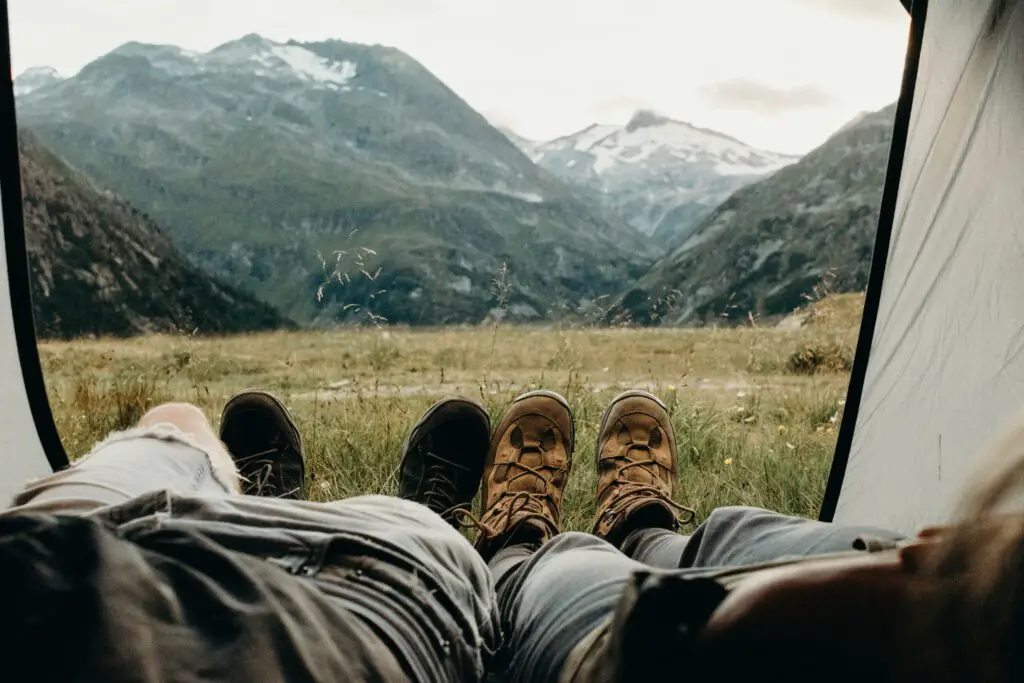
Setting Up Camp
While setting up camp is always hard work, working together as a team to set things up can be a surprisingly enjoyable process. Remember that communication is the key. Make sure to walk through the steps below together before tackling them to ensure the smoothest experience.
Arrive at your campsite with plenty of time to set up camp before dark. Don’t rush the setup process – nothing is worse than starting off a romantic camping trip with your partner with a frenzied and frustrating rush that leaves you both stressed out and mad. Take your time – maybe even start by having a drink together to celebrate your arrival before sweating the campsite setup.
Step 1: Choosing the Right Spot
When setting up camp, the first thing you need to do is find the right spot. Look for level ground where you can comfortably sleep and set up a cooking area. A spot under slight shade can be beneficial to keep the sun out during day time, but make sure you’re not under a tree that might drop heavy branches.
When my partner and I are on a camping trip together, we usually try to find a more private spot to pitch our tent. Nothing kills the romance while camping more than feeling like you’re being watched (and heard) from all sides. Think of your time together as a chance to get some special time alone. Make sure to prioritize the “alone” part by choosing a spot that will give you and your partner a bit more privacy to be yourselves and enjoy your time together.
Step 2: Pitching Your Tent
Once you’ve chosen the right spot, it’s time to set up your tent. Make sure the ground is clear of stones or sticks that could pierce your tent. Stake the corners of your tent into the ground, ensuring it’s tight. Once the tent is staked, insert your tent poles and raise the structure. After the tent is up, take the time to secure any additional guidelines to provide your tent with added stability against wind.
Pro Tip: For a romantic camping trip with your partner, more is better. A bigger tent with more room is better than the 2-person (really a 1-person) backpacking tent you have in your garage. A bigger bed (see the Coleman Queen Airbed Cot for an example) is better than smaller, individual meals. While you’re at it, bring a few extra drinks in your larger cooler. In our opinion, camping as a couple is about spending time together enjoying the outdoors – plan your trip to optimize for your mutual enjoyment.
Step 3: Setting Up Your Fire Pit
Your fire pit should be at a reasonable distance from your tent to avoid any accidents. First, create a circular pit in the ground about 3 feet across. Border this circle with rocks. This will be the main container for your fire. Gather wood, sticks, and kindling. Remember, never leave a fire unattended and always extinguish your fire before going to sleep.
Make sure to check before leaving home to make sure fires are allowed when you plan to camp. Many locations are under fire bans and you’ll need to get a bit more creative if you want to enjoy a fire. Propane fire pits like this one are typically allowed when wood fires aren’t and can be a great alternative.
Step 4: Arranging Sleeping and Cooking Areas
Inside the tent, arrange your sleeping area with sleeping bags and pillows. As we mentioned above, my partner and I love to sleep in a setup that feels as romantic and luxurious as our bed at home does when possible. If you prefer not to bring your bedding from home, you can also unzip your sleeping bags to use them like bedding as opposed to containing and confining each of you.
Cooking should be done a reasonable distance from the tent to keep food smells away from your sleeping area. A foldable table can be set up for preparing meals and eating.
Step 5: Maintaining Cleanliness and Hygiene
Maintaining cleanliness and hygiene during camping is critical for a healthy and enjoyable camping experience. This is especially true when camping as a couple. If you want to be close with your partner and enjoy the romantic moments you’ll experience together outdoors, it’s a good idea to be clean.
Bring along plenty of soap, wipes, and hand sanitizers. Do not dispose of soap or food scraps near your campsite as it can attract animals. Always carry out your trash and leave the campsite as you found it.
If you choose to camp at a location without restroom facilities, read our Guide to Creating your Own Campsite Bathroom for some ideas on how to do it right. We recently reviewed and fell in love (at least as much as one can love a toilet) with the Trelino Evo S Composting Toilet. We think it’s the perfect camping bathroom solution and both my partner and I love using it when we camp.
Step 6: Understanding Camp Rules and Regulations
Lastly, always remember that each camping site comes with its own set of rules and regulations. Take time to know the regulations of your chosen camping spots. Respect the environment and wildlife around your camping site and remember, the goal is to leave no trace behind so that others can enjoy the natural beauty and wonder in the future.
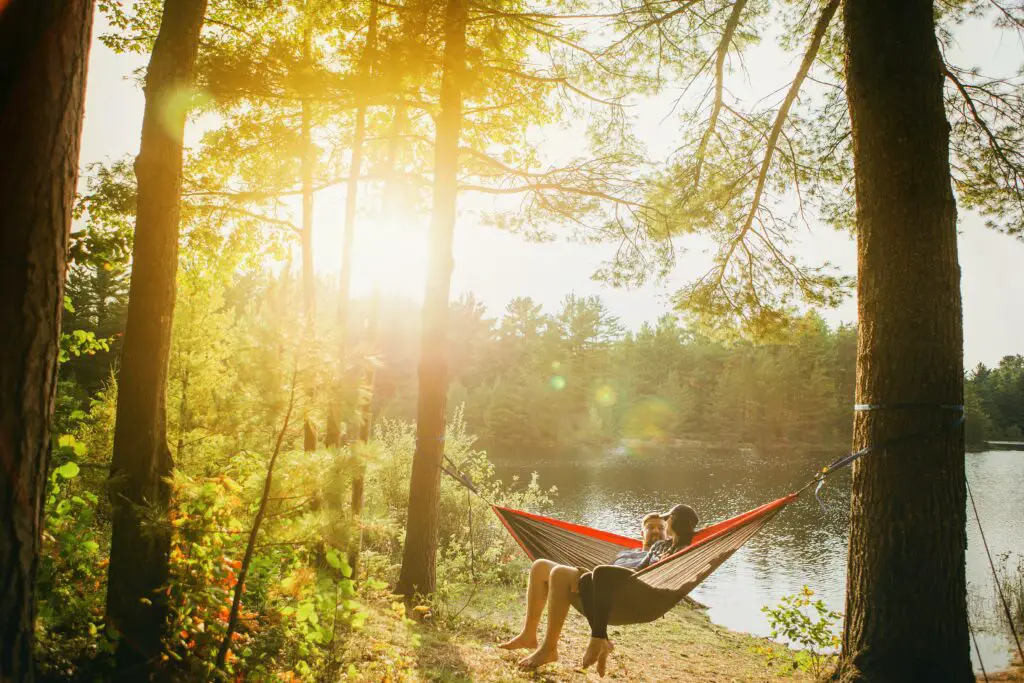
Camping Activities for Couples
Planning your Camping Activities
Charting out your camping activities is an essential step in creating an enjoyable and memorable outdoor experience. Divide the responsibilities equally between both partners. Decide if you’re more interested in laid-back activities like wildlife watching and stargazing, or more exciting options like hiking and exploring. Don’t forget to plan the meals you’ll be preparing together!
Alone Time….Together
When camping with your partner, it can be great to take advantage of the break from the noise, schedule, and business of our everyday and enjoy the quiet peace of the outdoors. Since we all enjoy the quiet differently, give each other permission to do whatever most recharges your batteries. Each of you can read, take a walk, birdwatch, take a nap, play a game, or whatever alone and on your own terms. You’ll find that giving each other this space while still being together can be both romantic and freeing.
Hiking Fun for Couples
One fantastic camping activity for couples is hiking. It encourages teamwork and resilience, and the shared accomplishment of reaching the peak is a bonding experience. Remember to pack plenty of water, snacks, and reliable footwear. Research your chosen trail before setting off, understanding the expected difficulty level and estimated duration. Make sure you stick to designated hiking paths to avoid potential hazards or getting lost.
Stargazing as a Couple
Camping for couples provides an excellent opportunity for stargazing. Be sure to pack a cozy blanket, hot drinks, and maybe a digital star map app for easy navigation of the night sky. Choose clear nights without moonlight for the best star visibility. Remind each other to step away from the light sources before starting this activity to allow your eyes to adjust to the night-time darkness. Also, take turns stargazing to maintain continuous surveillance of your surroundings for nocturnal wildlife.
Camping Meals for Two
Food always tastes better outdoors. Preparing meals together can be a fun, romantic camping activity for couples. Choose recipes that are easy to prepare and don’t require too many ingredients. Pack the cooking essentials and remember to bring enough clean water for both drinking and cooking. Remember to cook well and store food properly to avoid attracting wildlife to your campsite.
Storytelling under the Stars
Sharing stories in the flicker of the campfire is a time-old camping tradition. You can take turns to narrate stories, be it real-life anecdotes, fairy tales, or imaginary adventures. This activity works best in a cozy, secure setup. Ensure the campfire is maintained safely, and remember to fully extinguish it before retiring for the night.
Wildlife Watching – A Unique Experience
Watching wildlife in its natural habitat can be an exhilarating experience. Equip yourselves with binoculars, wildlife guides, and a lot of patience. Respect the boundaries of any animals you encounter, and avoid feeding or trying to touch them. Always follow local guidelines and regulations for wildlife watching to ensure your safety and that of the animals.
Camping Safety Tips
Regardless of the activities you choose, safety should be your top priority. Always let someone else know your camping plans, including estimated return time. Carry a basic first aid kit, sufficient supplies, and navigation tools. Adhere to local advisories and weather reports. And most importantly, leave no trace—carry all garbage with you to keep the environment safe and clean for wildlife and future campers.
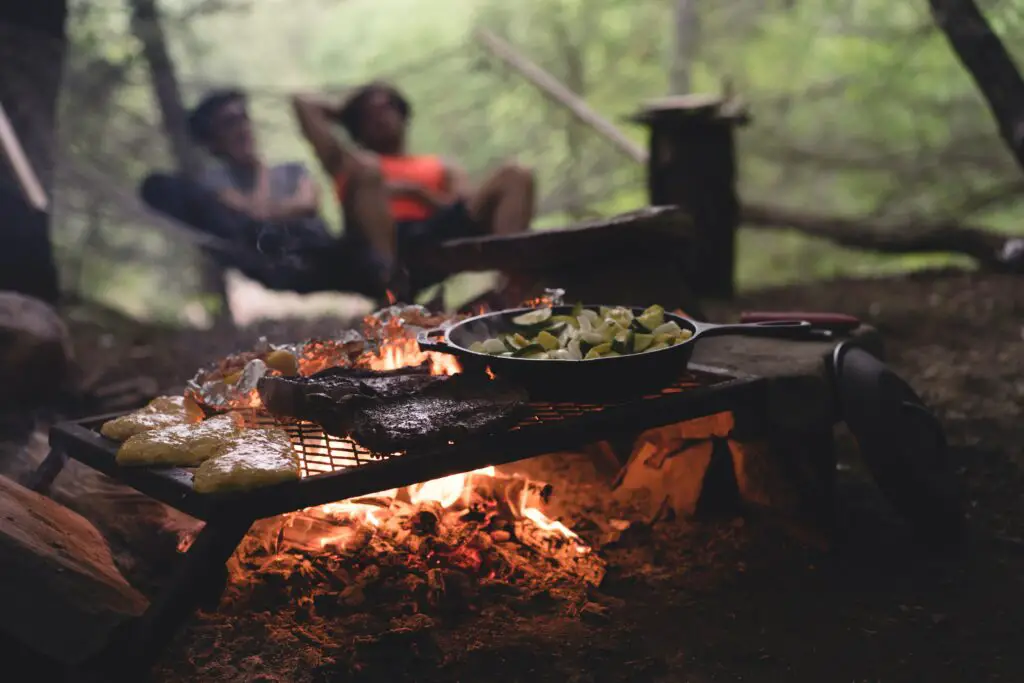
The Bottom Line
Whether you are seasoned campers seeking a refreshed perspective or novices embarking on your first outdoor journey together, adequate planning can enhance your camping experience exponentially. Understanding how to select the right equipment and campsite, how to set up your camp effectively, and engaging in romantic yet fun activities can transform your trip into a truly memorable one. Moreover, remaining clean and organized during your camping trip will ensure a safe and comfortable stay.
Always remember, camping is not just an activity; it’s an experience – one that encompasses collaboration, adaptation, and improvisation. The main intent is to enjoy the serenity of the wild while relishing each other’s company. So put on your adventure caps, prepare well and let the beauty of nature strengthen the bonds of your relationship.
